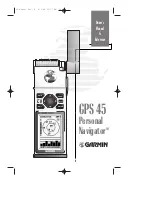
35
GIS (Geographic Information System)
a computer based system that is capable of collecting, managing and analyzing
geographic spatial data. This capability includes storing and utilizing maps,
displaying the results of data queries and conducting spatial analysis.
Hot Start
Start mode of the GPS receiver when current position, clock offset, approximate
GPS time and current ephemeris data are all available.
L1 frequency
1575.42 MHz GPS carrier frequency which contains only encrypted P code, used
primarily to calculate signal delays caused by the ionosphere.
Latitude
A north/south measurement of position perpendicular to the earth's polar axis.
Longitude
An east/west measurement of position in relation to the Prime Meridian, an
imaginary circle that passes through the north and south poles.
Multipath
Multipath is the reception of a signal both along a direct path and along one or
more reflected paths. Multipath signals result in an incorrect pseudorange
measurement.
NMEA (NATIONAL MARINE ELECTRONICS ASSOCIATION)
A U.S. standards committee that defines data message structure, contents, and
protocols to allow the GPS receiver to communicate with other pieces of electronic
equipment aboard ships.
Selective Availability (SA)
Selective Availability is a process whereby the U.S. Department of Defense dithers
the satellite clock and/or broadcasts erroneous orbital ephemeris data to create a
pseudorange error to prevent adversaries from using the extremely accurate GPS
positioning data.
SPREAD SPECTRUM
The received GPS signal is wide bandwidth and low power. The L-band signal is
modulated with a pseudo random noise code to spread the signal energy over a
Содержание BTGPS III
Страница 1: ...BTGPS III GPS Receiver User Guide ...



































